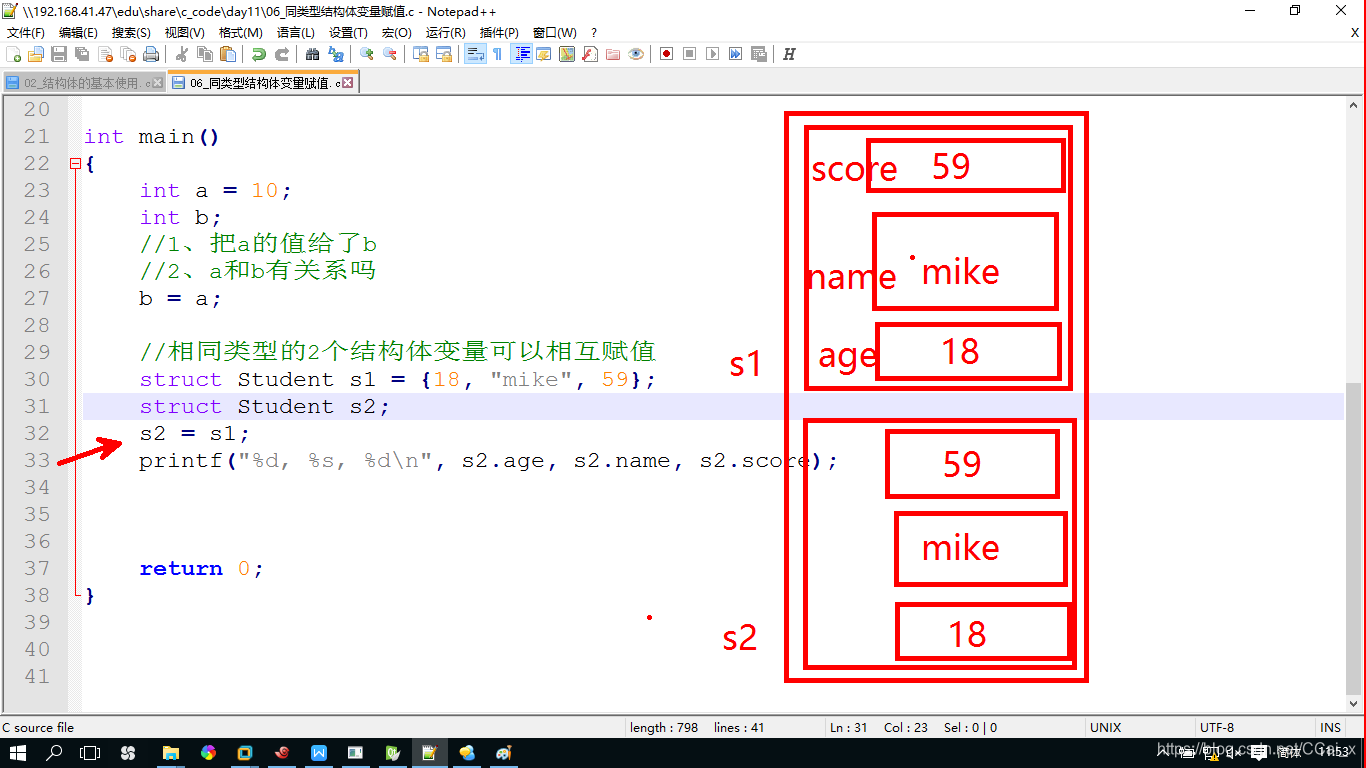同类型的结构体如何赋值 以及 结构体的值传递和地址传递的区别
同类型结构体变量赋值
#include <stdio.h>
struct Student
{
int age;
char name[50];
int score;
};
int main(int argc, char const *argv[])
{
int a = 10;
int b;
//1、把a的值给了b
//2、a和b没有关系,两个变量都是独立的
b = a;
//1、相同类型的2个结构体变量可以相互赋值
//2、尽管2个结构体变量的内容一样,但是2个变量是没有关系的独立内存
struct Student s1 = {18, "mike", 70};
struct Student s2;
s2 = s1;
printf("%d, %s, %d\n", s2.age, s2.name, s2.score);
return 0;
}

值传递和地址传递区别
#include <stdio.h>
struct Student
{
int age;
char name[50];
int score;
};
//值传递,效率低,这里只是打印tmp的值,不是真正去打印stu2的值
void fun(struct Student tmp)
{
tmp.age = 22;
printf("%d, %s, %d\n", tmp.age, tmp.name, tmp.score);
}
//地址传递,效率高,这里才是真正去打印stu2
void fun2(struct Student *p)
{
printf("%d, %s, %d\n", p->age, p->name, p->score);
}
int main(int argc, char const *argv[])
{
struct Student stu2 = {18, "mike", 59};
//fun(s1);
fun2(&s1);
return 0;
}
结构体值传递示意图

结构体地址传递结构体
